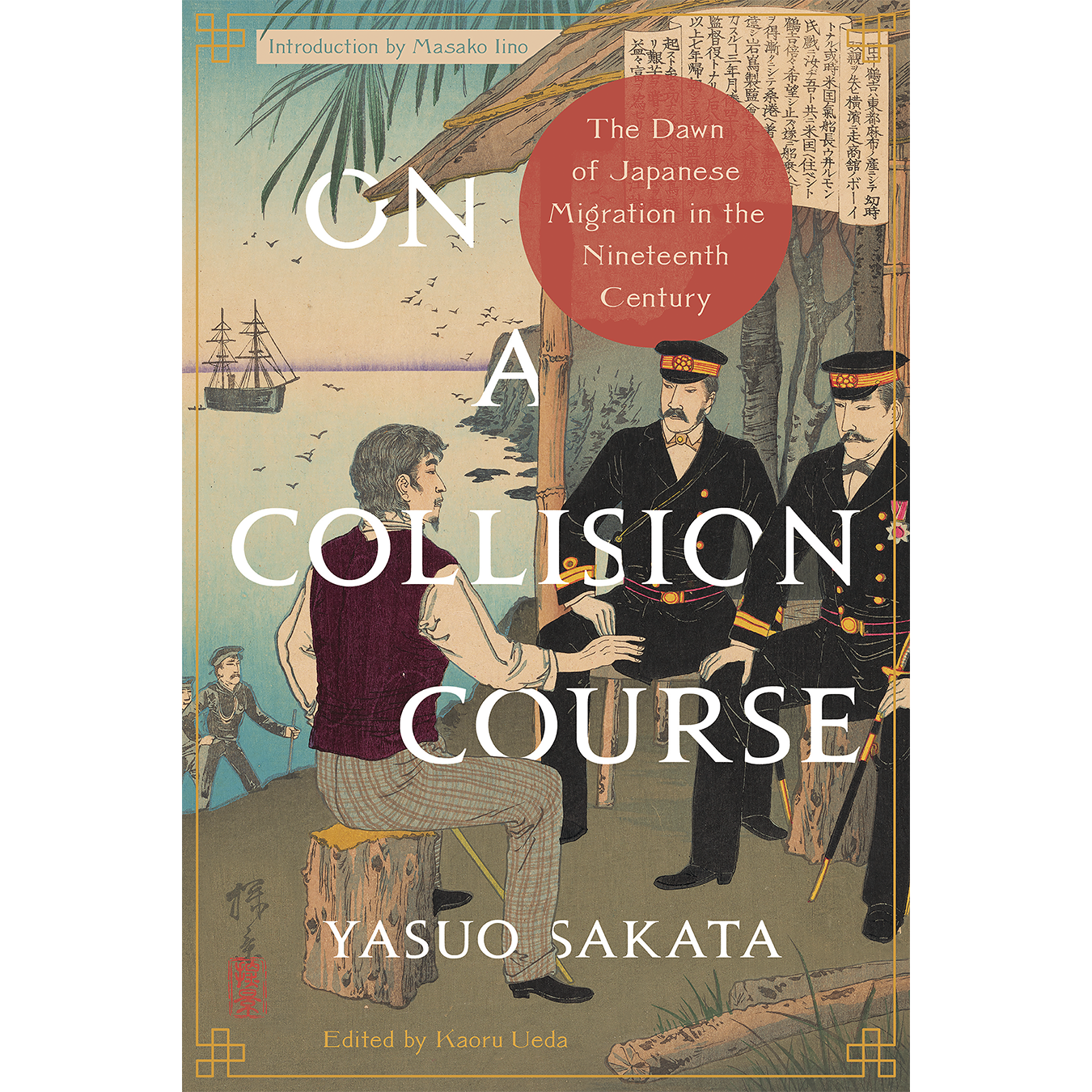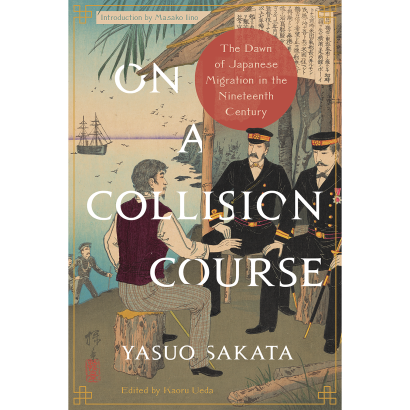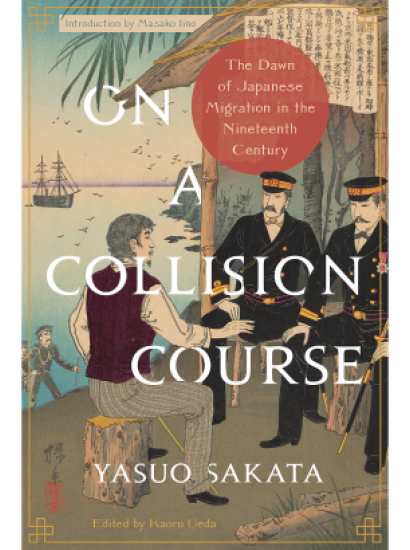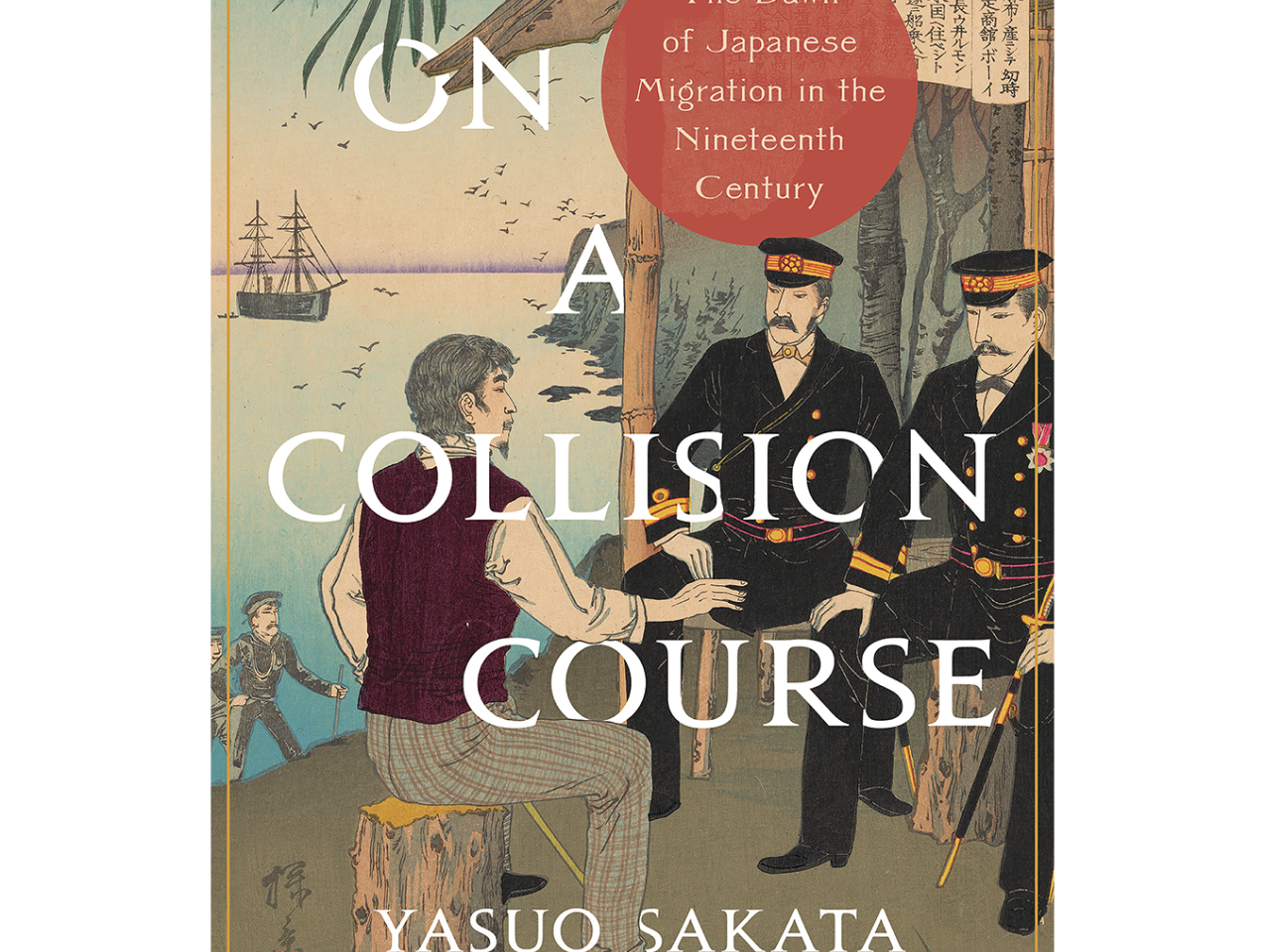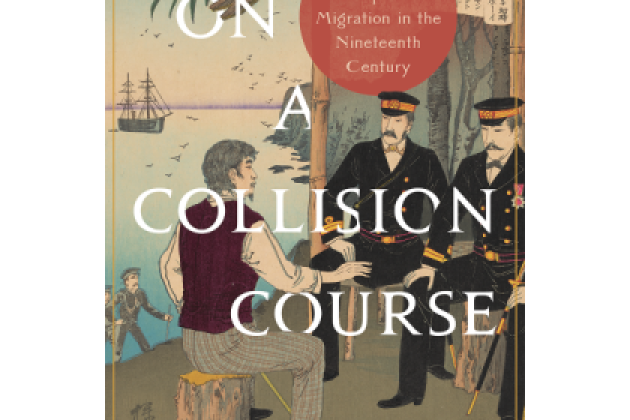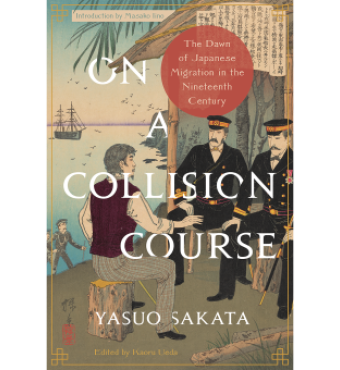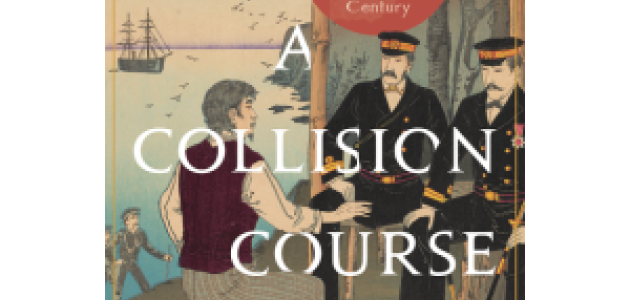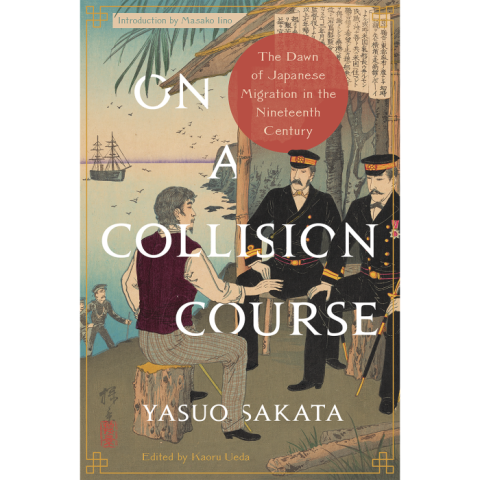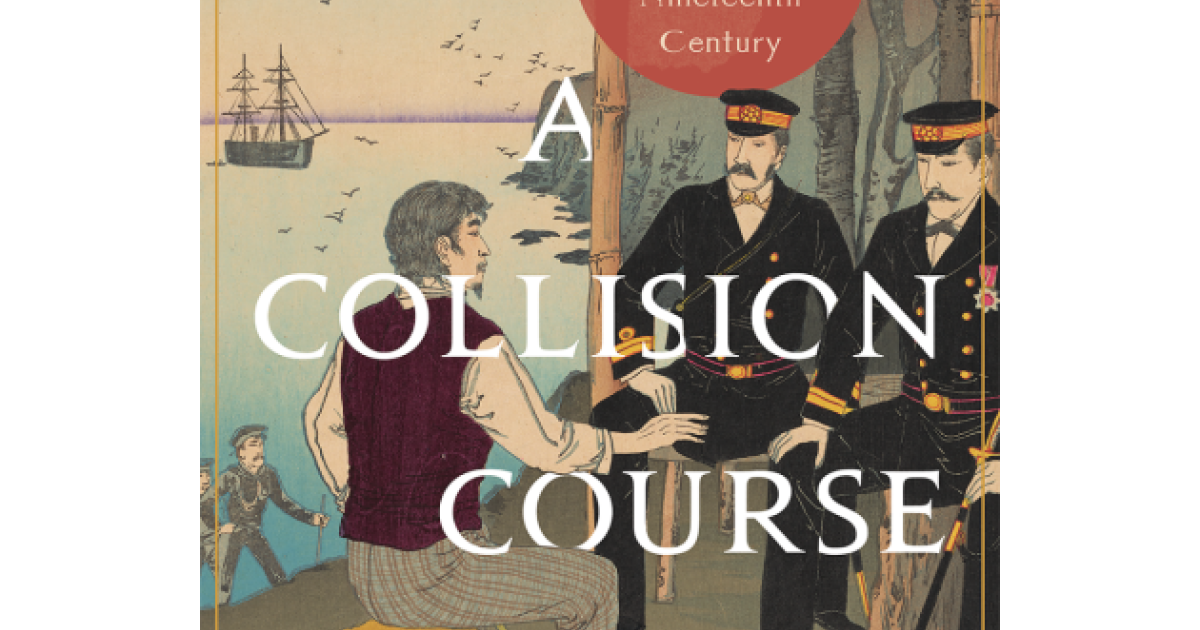Hoover Institution, Stanford University
by Jonathan Movroydis
Kaoru Ueda is curator of the Japanese Diaspora Collection of the Hoover Institution Library & Archives, where she manages the Japanese Diaspora Initiative and the Hoji Shinbun Digital Collection. Ueda is also the editor of On a Collision Course: The Dawn of Japanese Migration in the Nineteenth Century, a new collection of essays by Yasuo Sakata published by Hoover Institution Press.
In this interview, Ueda discusses the history of Japan’s open-door policy to the West, the aspirations of Japanese migrant workers living in the United States, and how these issues impacted US immigration policy.
Why did you decide to work on this book project?
Yasuo Sakata’s scholarly work is in line with the Hoover Library & Archives’ mission: learning from the past, based on a thorough examination of primary source documents. Sakata’s essays have the rare characteristic of being informed by thorough translations and analyses of Japanese-language sources as well as an examination of those in English. He raises important questions about established historical understandings and increases awareness among English-speaking scholars of Japanese migration studies.
There is a gap in the preservation of historical documents because of the destruction of many records in the 1906 Great Earthquake in San Francisco. More significantly, as a result of the Japanese attack on Pearl Harbor on December 7, 1941, and the war in the Pacific, important documents were either confiscated by the FBI or Japanese Americans discarded them out of fear that the records would be used as evidence to prove these people’s alleged loyalty to the Japanese government.
Who is Yasuo Sakata?
Yasuo Sakata is a leading scholar in migration studies and Japanese-American studies, both in Japan and the United States. He's published many great books and essays. His academic career started in the 1970s and brought about much-needed improvements to his fields of study. He received a BA in history and PhD in East Asian history from UCLA, where he was instrumental in compiling the Japanese-American Research Project. His experience in reading primary source documents and interviewing first-generation Japanese American immigrants taught him many lessons in studying Japanese American history. He also became the president of the Japanese Association for Migration Studies.
Could you tell us about his warnings of bias regarding Japanese American historical records during World War II?
Almost immediately after Japan’s attack on Pearl Harbor, the FBI arrested Japanese leaders, educators, press editors, and Buddhist priests. The government also confiscated many of their personal and organizational records, which might have filled a current gap in Japanese American documented history.
Even after World War II, Japanese Americans worried about being associated with the Japanese government. So, the first-generation Japanese Americans remained silent about their history. Consequently, there is a huge gap in the prewar records, particularly pertaining to the immigrants’ relationship with the Japanese government. Many of these documents are presumably lost forever.
What was the state of US-Japanese relations during the nineteenth century?
Japan adopted a closed-door policy for 214 years, until Commodore Matthew Perry came to Japan in 1853. Until then, only the Dutch East India company and Chinese merchants were allowed to trade with Japan. Perry forcibly opened Japanese ports, and the Japanese and US governments signed the Kanagawa Convention in 1854. This was the restart of Japan’s engagement in overseas trade and migration out of Japan. The Perry mission changed the course of Japanese history.
What were the origins of Japanese migration to the United States?
The United States sent Townsend Harris as the first American diplomat, to be stationed in Shimoda in 1854. He desperately needed servants to assist him in his daily life. The Japanese government grudgingly allowed Townsend to hire Japanese nationals and then to take them out of the country. This was a very incipient but important step toward Japanese migration to the United States.
What were the respective views of the American and Japanese governments on the issue of Japanese migration?
The Americans and Japanese had two vastly different and irreconcilable policies, and the term “immigration” is basically a misnomer with regard to Japanese migration to the United States. The Japanese government would not allow migrants working abroad to become permanent settlers of the host country. These workers were expected to return to Japan, because they belonged to “the soil of Japan” and no place else. Some Japanese migrant workers ended up becoming US settlers, but that was not their initial or official intention. The US government, on the other hand, discouraged foreign contract laborers, and ultimately forbade their entry as a result of the Foreign Act of 1885. This put Japanese migrants into a legal “no-man’s land,” as they could be considered neither temporary contract laborers, according to US law, nor permanent US residents, according to Japanese law.
Did the average Japanese migrant worker want to establish permanent ties to the United States or return to Japan?
I believe most of them wanted to receive good earnings in the United States and eventually return to Japan. As more Japanese-owned businesses thrived, and as Japanese children became educated in American schools, many decided to settle permanently in the United States. However, this is a separate issue from their initial intentions.
How were these migrants generally treated in the United States, especially as Japan was engaged in wars on the Asian continent in the nineteenth century?
Initially, the United States payed little attention to the Sino-Japanese War of 1894. But when Japan surprisingly defeated Russia in the Russo-Japanese war in 1905, the United States started perceiving Japan as a threat. When more Japanese workers arrived in the United States, white American workers started to believe that their job security was threatened. Strong anti-Asian sentiment led to a series of immigration policies, barring Asians from being naturalized. Consequently, the first generation of Japanese Americans, what we call Issei, had no choice but to remain as Japanese nationals, creating a precarious situation when they needed to decide their loyalty to the home or host country.
How would you compare the Japanese immigration experience in the United States to that of the Chinese?
Just as Chinese immigrants were prohibited from immigration by the 1882 Chinese Exclusion Act, eventually the Japanese also were singled out. Americans lumped Chinese and Japanese together and considered both as threats to their job security. Japanese, who believed Americans would value their progress in civilization and enlightenment and treat Japanese differently from Chinese, tried to circumvent pan-Asian exclusion.
The key difference, however, was that the United States started to view Japan as a rising power. Washington had to take Tokyo seriously. President Theodore Roosevelt was the mediator between the Russians and the Japanese after the Russo-Japanese War. The negotiations led all parties to Portsmouth, Maine, where a peace treaty was signed. In order to prevent a major conflict from occurring, Roosevelt tried to calm the Japanese leadership as well as reduce tensions between Americans and Japanese migrants living in California.
Did the experience of Japanese migration ultimately impact United States immigration policy?
Japanese large-scale migration to the United States caused reactionary responses in media and white America. As a result, US legislators enacted anti-Asian immigration acts. A major blow to the Japanese American community in fighting against these legislations occurred in 1922. A native-born Japanese named Takao Ozawa, who had been living in the United States for twenty years, filed a lawsuit against the United States for rejecting his petition for citizenship. The US Supreme Court affirmed the government’s action on the basis of the 1906 Naturalization Act, which allowed only white or African descendants to become naturalized US citizens. Eventually the 1924 Immigration Act completely banned Asian immigration to the United States.
Following World War II and the rise of communism, the political current started easing for Asian immigration. The Immigration and Naturalization Act of 1952 allowed a limited number of Asian immigrants. Between 1952 and 1965, a significant milestone was reached when more than 40,000 first-generation Japanese Americans became naturalized US citizens.
What do you hope readers will learn from this history?
The politics of US immigration tends to alternate between open-door and closed-door policies. The history of Japanese migration to the United States demonstrates that the debate often starts when American workers worry about being displaced. The danger actually lies in the polarized manner in which this issue is discussed in the media and the political arena. I hope that this history is not erased from America’s collective memory, because it has many important lessons to teach us about today.







